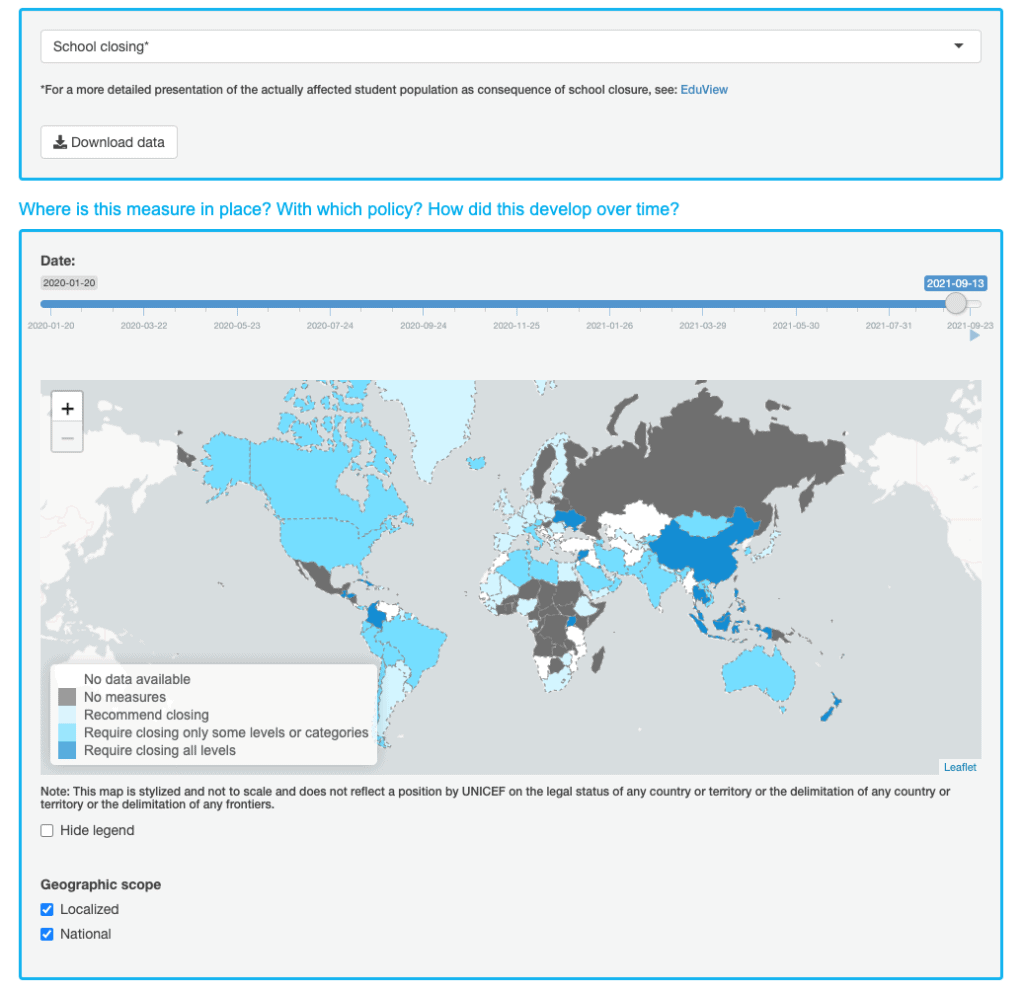Last updated: September 2022
COVID-19 and children
UNICEF data hub
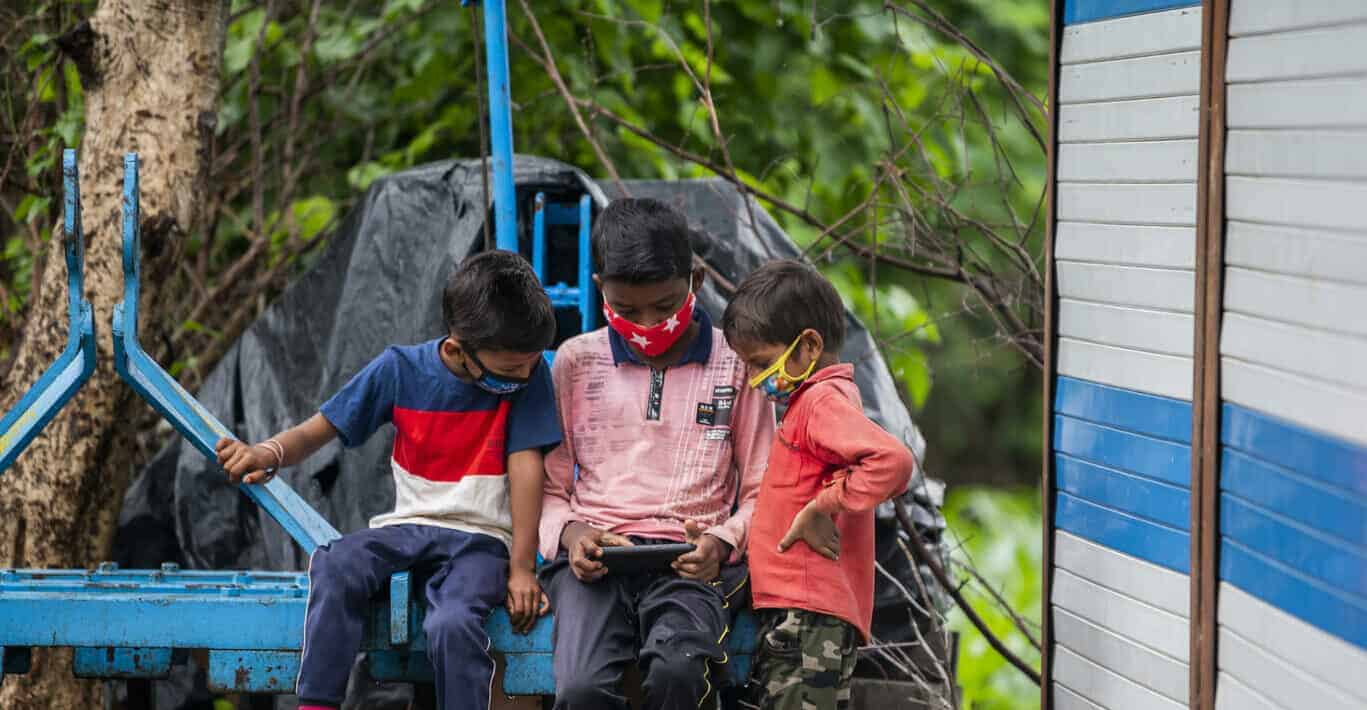
This is a universal crisis and, for some children, the impact will be lifelong.
Children are not the face of this pandemic. But they risk being among its biggest victims, as children’s lives are nonetheless being changed in profound ways. All children, of all ages, and in all countries, are being affected, in particular by the socio-economic impacts and, in some cases, by mitigation measures that may inadvertently do more harm than good.
Moreover, the harmful effects of this pandemic will not be distributed equally. They are expected to be most damaging for children in the poorest countries, and in the poorest neighbourhoods, and for those in already disadvantaged or vulnerable situations.
As families lose their sources of income due to COVID-19 and the global economy has been plunged into a recession, more households are falling into monetary poverty. For the poorest families, including those who do not have access to social protection, the situation is dire.
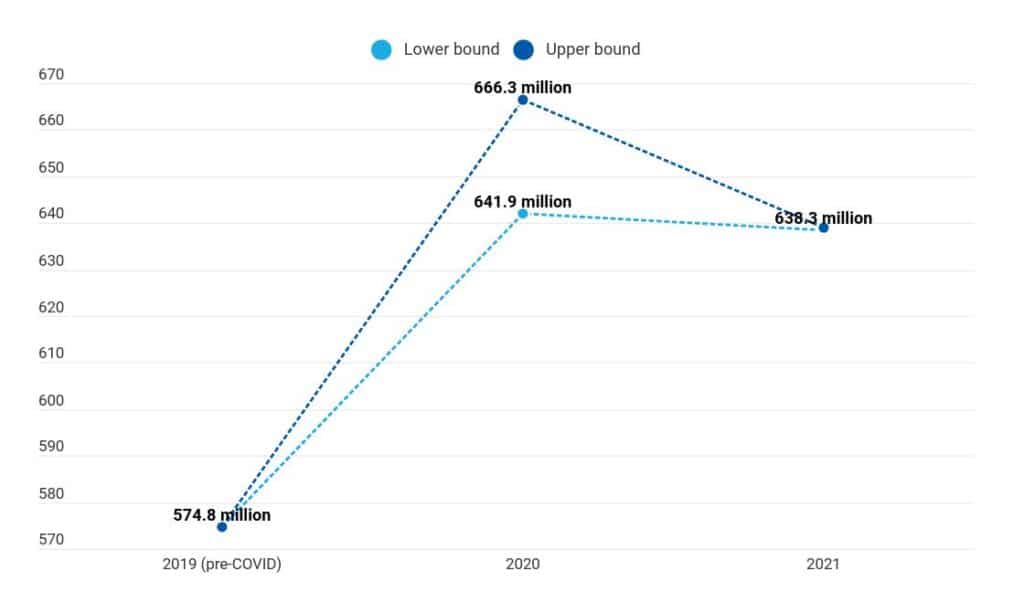
Since children experience poverty differently than adults, it is also important to assess their material shortcomings and potential deprivations and to measure their poverty multidimensionally rather than just through income alone.
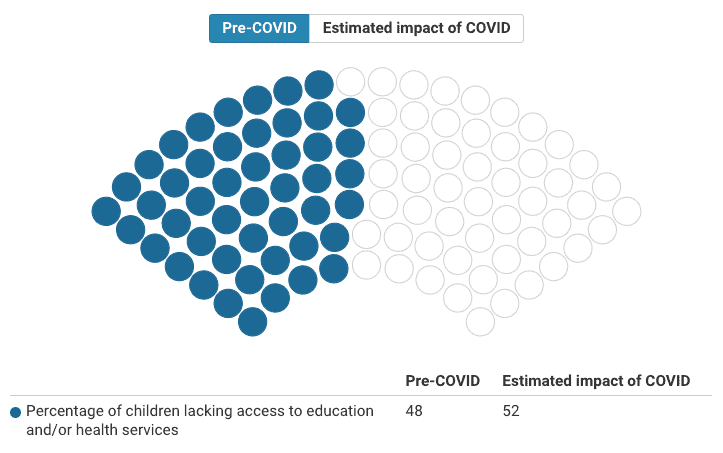
The potential losses that have accrued in learning for today’s young generation, and for the development of their human capital, are hard to fathom. Three years into the COVID-19 pandemic, 23 countries – home to nearly 405 million schoolchildren – are yet to fully open schools, with many schoolchildren at risk of dropping out.
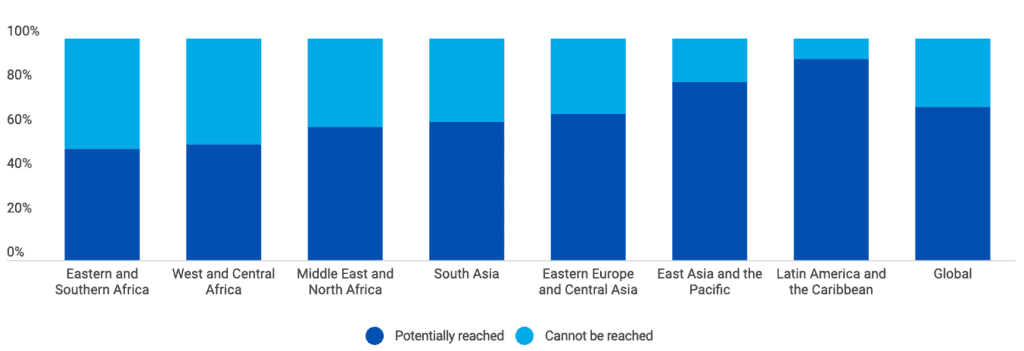
While children appear to be largely spared the direct mortality impacts of COVID-19, the indirect effects stemming from strained health systems and disruptions to life-saving health services such as immunization and antenatal care, can result in devastating increases in child mortality.

Today, more vulnerable children are becoming malnourished due to the deteriorating quality of their diets and the multiple shocks created by the pandemic and its containment measures. Efforts to mitigate the transmission of COVID-19 are disrupting food systems, upending health and nutrition services, devastating livelihoods, and threatening food security.
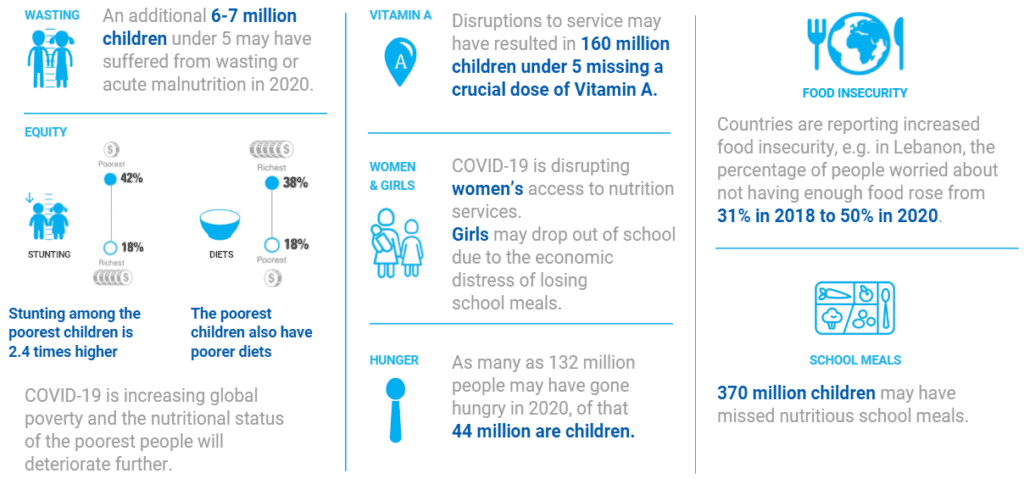
Every year, vaccines save an estimated 2 to 3 million lives, but COVID-19 threatens to roll back decades of progress made in reducing preventable child deaths by hindering access to these life-saving services. According to new data, nearly 14 million children did not receive any vaccines in 2019.
80 million children under the age of 1 in at least 68 countries may miss out on receiving life-saving vaccines
New HIV infections among young children have decreased by half in the last decade, however, service disruptions due to COVID-19 could reverse these gains. The number of new HIV infections is projected to nearly double if 100 per cent of the population loses access to treatment services over a six-month period, and the number of paediatric deaths will similarly soar.
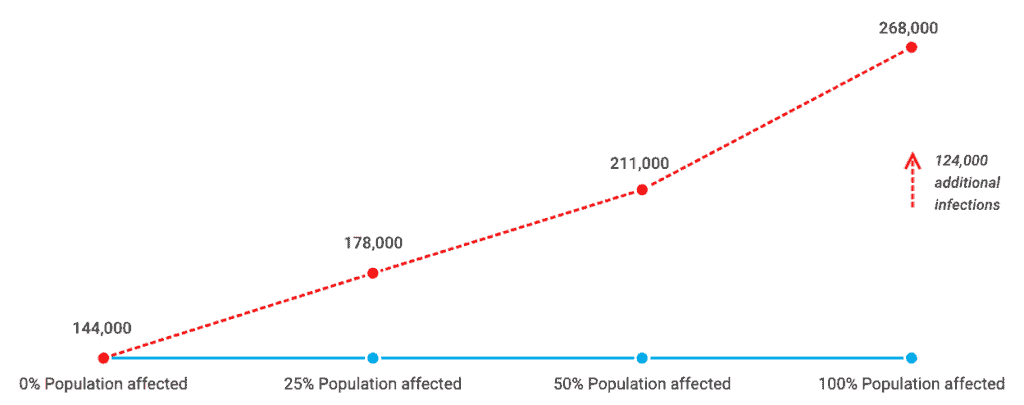
Lockdowns measures can expose children to a range of risks. Several factors related to confinement measures are likely to result in heightened tensions in the household, added stressors placed on caregivers, economic uncertainty, job loss or disruption to livelihoods, and social isolation.
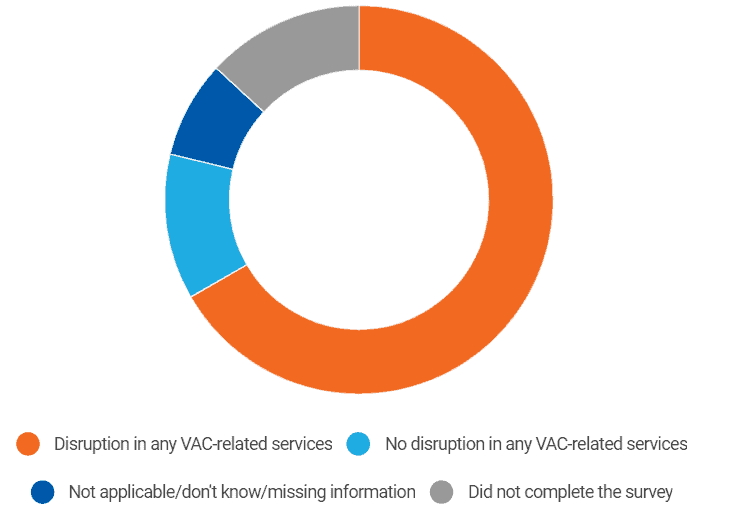
The everyday lives of girls have been overturned by the pandemic: their physical and mental health, their education, and the economic circumstances of their families and communities. Changes like these increase the likelihood of child marriage, and over the next decade, up to 10 million more girls will be at risk of becoming child brides as a result of the pandemic.
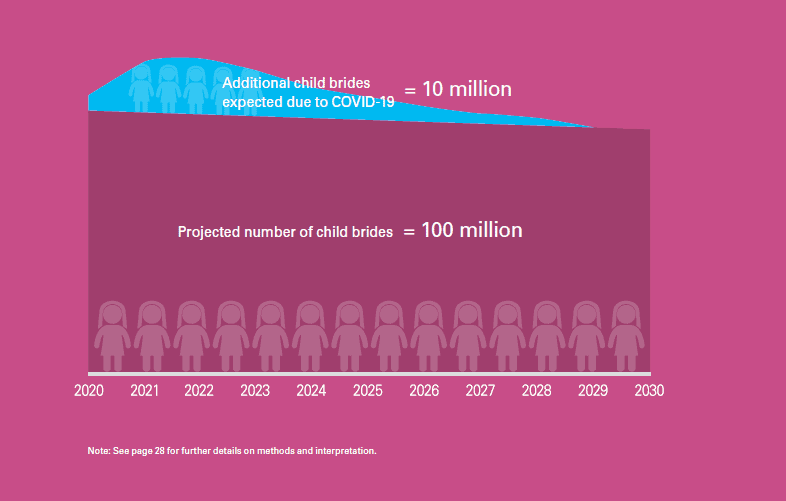
Featured data
Measures taken by governments to contain and mitigate the COVID-19 pandemic are having persistent and far-reaching impacts on children’s lives. This dashboard tracks these impacts using quarterly data from UNICEF country offices.
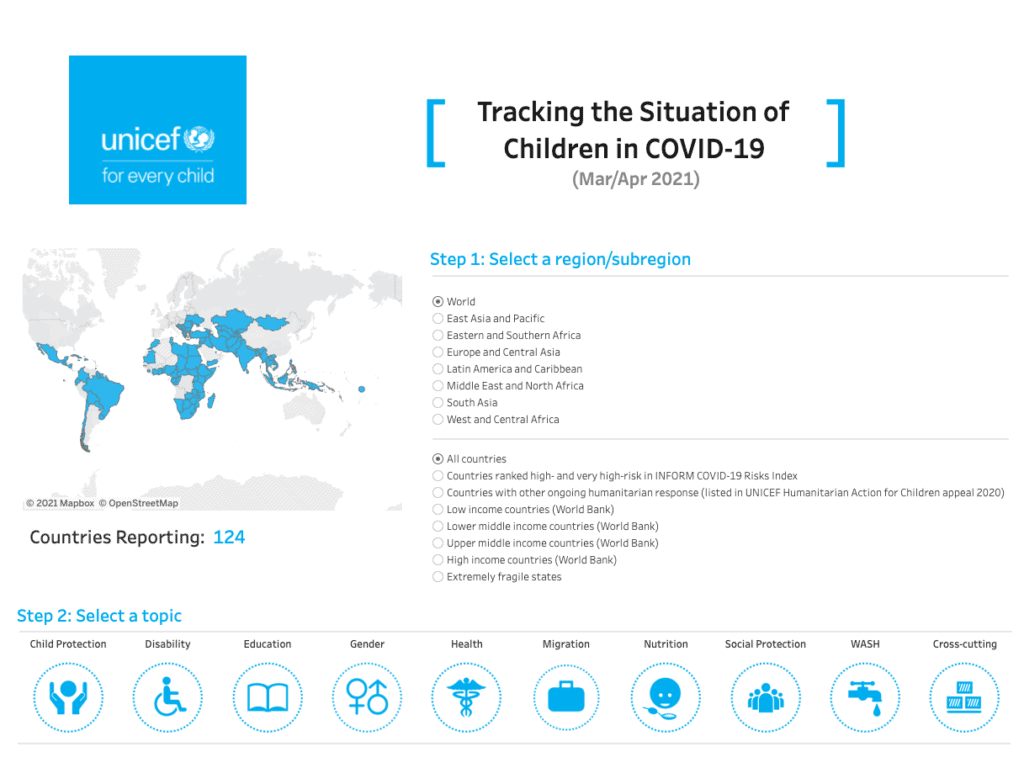
The data in this dashboard provide guidance for UNICEF and country programmes so that our efforts to mitigate and overcome the effects of the pandemic can be measured.

Washing hands frequently and properly with soap and water is critical to preventing diseases. Yet the latest global estimates find that 3 billion people lacked soap and water at home, 900 million children lacked soap and water at their school.
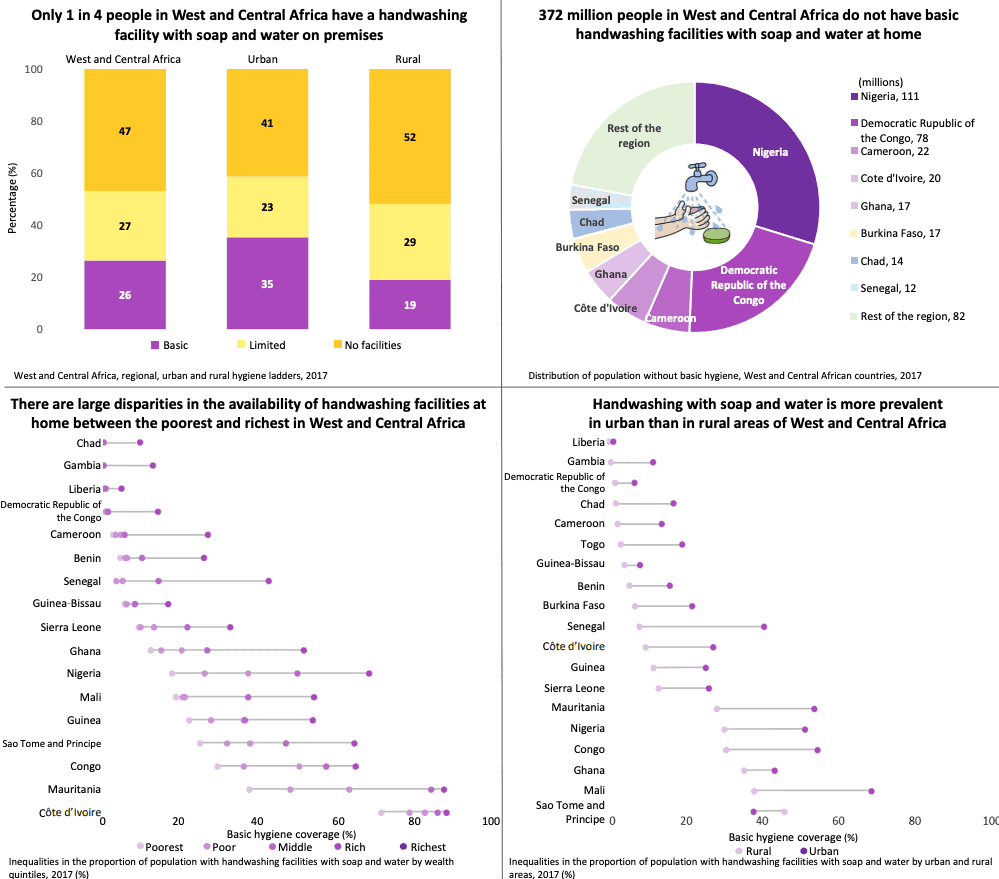
This dashboard brings together information on current measures implemented by governments in response to COVID-19 alongside the population size and the number of children, child migrants and displaced children living in those countries.
